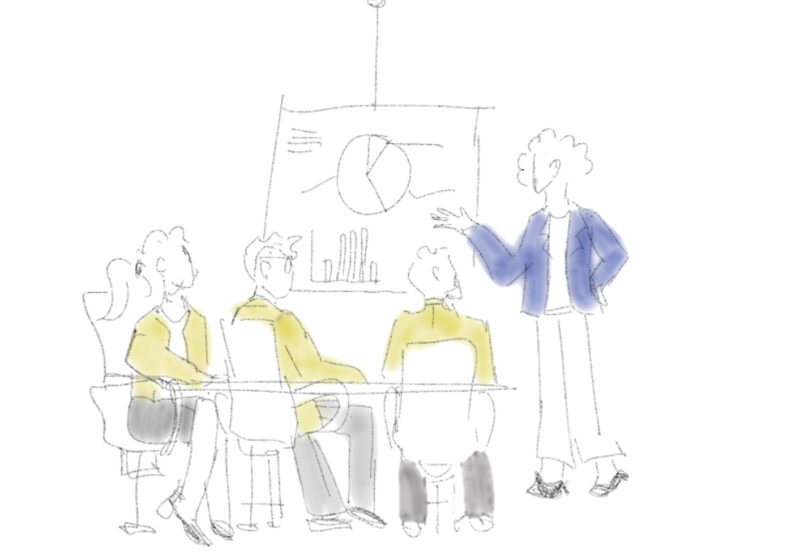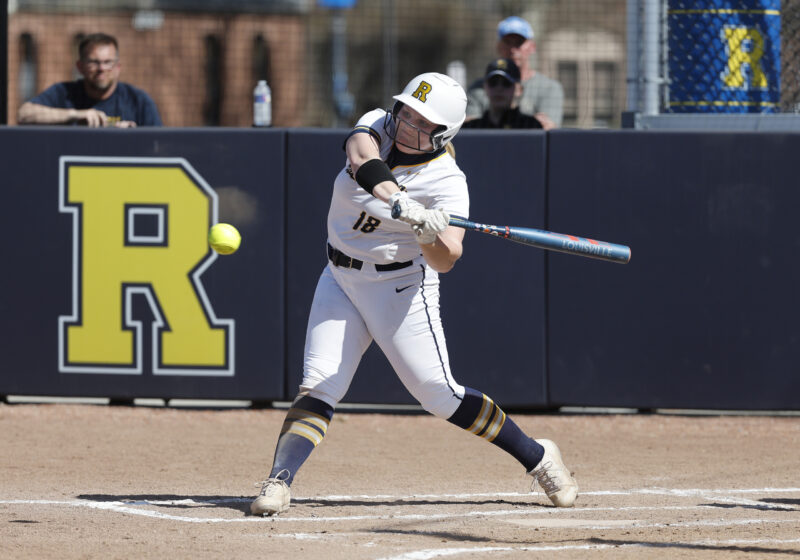For those who think the Eastman School of Music is only concerned with classical music and hasn’t yet been convinced otherwise, Ossia, a student-run group entirely dedicated to the production of new music, may change your mind.
Funded by Eastman, it receives musical works from famous contemporary composers to budding Eastman musicians. Ossia’s goal is to perform works of a differing caliber than one usually finds at Eastman due to content, media or composer. Ossia has its roots in the unconventional – its name being derived from the score marking that indicates a musical alternative.
Is trying something new not your thing? You may have already experienced the alternative sounds of Ossia on the River Campus without even knowing it. If this past September you halted in your tracks to quizzically watch a group of instrumentalists randomly spread out across Dandelion Square, you probably witnessed a rehearsal for Merger, a composition by Take Five Scholar Abby Aresty.
Founded in 1997, the group has expanded beyond just “serious” concerts given at venues such as Kilbourn Hall and Christ Church to now include tours, recordings and outdoor productions such as the one displayed on the River Campus.
This year’s concert season also includes a show at Kilbourn Hall at 8 p.m. on Nov. 16, highlighting works from composers Anton Webern, Franco Donatoni, Arnold Schoenberg and senior Ethan Borshansky.
If you are wondering how an Eastman composition student is admitted into the program, it is through Ossia’s unique system of selection. As a student-run group, Ossia is completely dependent upon proposals submitted by Eastman faculty, students and members of the greater Rochester area. Proposals are then reviewed each year by a board of members and a repertoire is then created for the next concert season. Almost any style ensemble is possible, from small singing groups to chamber orchestras to a small, full scale orchestra. It’s exactly this kind of unique opportunity that draws composers to the prestigious school and enhances its already well-established new music program.
“I am a composer and pianist,” Ossia member and doctoral student David Plylar said. “And one of the reasons I chose to come to Eastman to pursue my Ph.D. was because of Eastman’s commitment to new music.”
Ossia’s current main conductor and doctoral student Martin Seggelke began working with the group for similar reasons.
“I found the Ossia info table during orientation week and signed up for their pool of performers as a conductor, thinking, ‘Wow, here’s a group organizing themselves, totally dedicated to contemporary music. This is outstanding, I want to be a part of it!'” Seggelke said.
Ossia contributes to Rochester’s unique artistic diversity by providing residents with access to one of the world’s most successful student-run new music ensembles.
The inspiration behind these musicians comes from their dedication to bringing new music to the Rochester community, where it might not otherwise be heard.
“One of the important jobs of today’s conductors [is] to commission, perform and repeatedly perform contemporary music in order to add to a productive [and] innovative music scene as part of the cultural life in our society,” Seggelke said.
It’s the same idea that is behind the success and continual performance of classical music pieces – the old favorites that we all know, like a good Thanksgiving dinner. Only these guys are out to create a whole new menu and are prepared to make it last.
When asked why student members of Ossia chose to deviate from the classical path, Public Relations Manager, clarinetist and graduate student Kara Bancks provides a straightforward answer.
“As a performer, it’s easy to become jaded by practicing the same orchestral excerpts over and over again,” Bancks said.
The challenge that Ossia’s new music provides for the traditionally classical musician is a weighty one, according to Seggelke.
“These works are extremely complicated and demanding to every single performer, asking for a multitude of experimental performance techniques,” he said. “In comparison to the performances of the ‘classical repertoire,’ contemporary music often provides significantly different challenges in terms of logistics, organization of a score, performance techniques, alterations of instruments, tempi, meter changes, rhythmical features, notation and much more.”
But, when considering the rewards, it’s a challenge that members are willing to accept.
“Many of the works are either world premieres or U.S. premieres by both emerging and well-known composers, as well as composers here in Rochester,” trombonist Paul Coleman said.
These students and professors seem to have a firm grasp on a promising future in music and have stepped forward amongst their contemporaries to help create that future. Ossia’s third performance of the season at Kilbourn Hall will provide a chance to be part of an innovative musical movement, especially for those who are tired of humming Beethoven’s third symphony and Chopin piano concerti while sleeping. To find out more about submitting a proposal, visit the group’s Web site at http://www.ossianewmusic.org and download a form from the main proposals page.
Hiler can be reached at khiler@campustimes.org.





